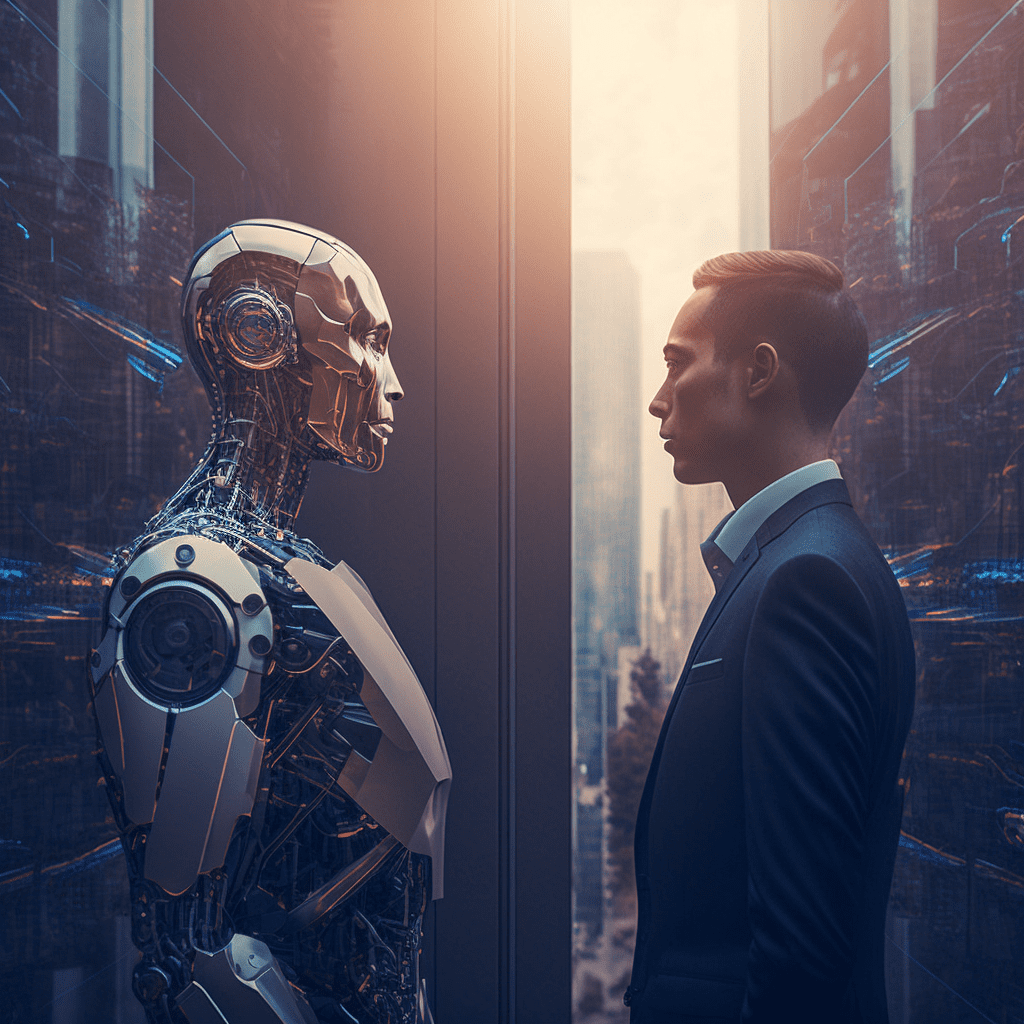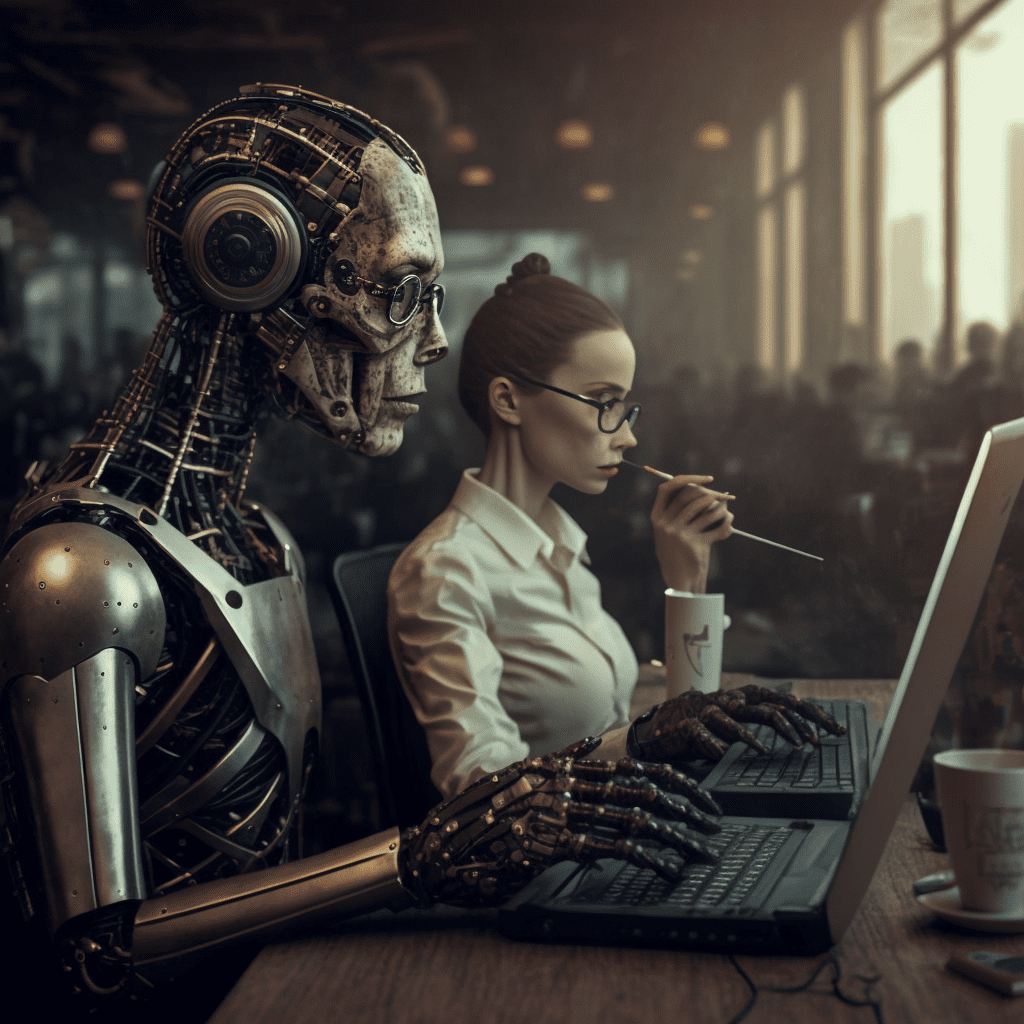Unlock the Potential of AI: Discover How The Artificial Intelligence Can Transform Your World
Nowadays we’ve witnessed the evolution of the AI field and its potential to revolutionize the way we work and live. Explore how AI can transform your life and unlock its full potential.


Efficiency
AI-based tools can help to reduce costs and increase efficiency.

Accuracy
AI tools can help to increase accuracy in decision-making and reduce human errors.

Quickness
AI-based tools can help to reduce the response time of overall processes and tasks.
AI Can Help You to Grow Up Your Business
Learn about the latest advancements in AI and how they can help your business to become more efficient, productive, and faster. Discover the power of AI and how it can help you to stay ahead of the competition.
$13.6T
Estimated to increase by 2030
40%
Automation and analytics can increase
30%
Reduction customer service costs

Keep Ahead
Find out how AI can help you to optimize your processes and make data–driven decisions.
Get started today and explore the growth possibilities for your business using artificial intelligence-based tools.
Get Informed About the Main AI Tools and Platforms
Unlock the Potential of AI

Jasper
Is the AI Content Generator that helps you and your team break through creative blocks to create amazing, original content 10X faster.

Murf
Make studio-quality voice overs in minutes. Use Murf’s lifelike AI voices for podcasts, videos, and all your professional presentations.
A.I Builds Landing Pages, Ads, Marketing Copy, Graphics, Promo Videos, Logos, Voiceovers, etc In 45 Seconds From Just a Keyword.

DALL E 2
Is a new AI system that can create realistic images and art from a text description in natural language. It can combine concepts, attributes, and styles.
Advantages of Using Free AI Tools Online
There are many advantages to using free AI tools online. One of the biggest benefits is the cost-effectiveness of these tools. Traditional AI solutions can be quite expensive and require a significant investment in hardware and software. However, free AI tools are available to anyone with an internet connection and typically require no upfront costs.
Another advantage of free AI tools is the ease of access. These tools can be used by anyone, regardless of their technical expertise. Many free AI tools are user-friendly and require little to no training to use effectively. This makes them a great option for individuals and small businesses that may not have the resources to invest in more complex AI solutions.
Free AI tools can also be a great way to test out different AI technologies before committing to a more expensive solution. Many of these tools offer a wide range of features and capabilities, allowing users to experiment with different approaches and find the best fit for their specific needs.
Artificial Intelligence: Unlock the Potential of AI
Click to download the presentation file
In addition, free AI tools can also help democratize access to AI technologies. Many of these tools are open-source, meaning that their code is available for anyone to use, modify and contribute to.
This can help to foster a sense of community and collaboration among developers and researchers, as well as encourage innovation and progress in the field of AI.
Another advantage of free AI tools is scalability, many of the free AI tools are cloud-based which means that they can be easily scaled up or down as needed. This is particularly useful for businesses and organizations that experience fluctuations in demand for their products or services.
In conclusion, free AI tools can provide a cost-effective, easy-to-use, and scalable solution for businesses and individuals looking to incorporate AI into their workflows. They also democratize access to AI and foster a sense of community and collaboration in the field. These tools can be a great way to test out different AI technologies and find the best fit for specific needs before committing to more expensive solutions.
Artificial Intelligence (AI) Tools for Artists
Artificial intelligence (AI) tools are becoming increasingly popular among artists as a way to enhance their creative process and produce unique and compelling art.
One popular use of AI in the art world is in the generation of digital images and animations. Artists can use AI algorithms to create new and unique images or to manipulate existing images in new and interesting ways. Some AI tools also allow artists to create animations by inputting a series of still images, which the AI then animates based on certain parameters set by the artist.
Another area where AI is being used by artists is in the realm of generative art. This type of art is created using algorithms that generate new artwork based on certain inputs or rules set by the artist. This can include everything from abstract patterns to landscapes and even entire virtual worlds.
AI is also being used in the field of music creation. There are several AI programs available that can compose and generate music based on certain inputs and parameters set by the musician. Some musicians also use AI to analyze their music and to get inspiration and feedback on their work.
In addition to these uses, AI is also being used in the field of virtual reality and augmented reality. Artists can use AI to create immersive, interactive experiences for audiences that blur the lines between the physical and digital worlds.
AI Tools: Partners or Enemies?
Overall, AI tools are providing artists with new and exciting ways to explore their creativity and push the boundaries of what is possible in their art. These tools are also making it easier for artists to experiment and iterate on their work, allowing them to produce new and unique pieces of art that would have been difficult or impossible to create otherwise.
However, it’s worth noting that the use of AI in art raises ethical questions, such as authorship and originality. It’s up to the artists and the community to establish guidelines and standards for the use of AI in art, to ensure that the art created is respected and valued for its merit.
In conclusion, the use of AI tools in the art world is rapidly expanding, providing artists with new and exciting ways to explore their creativity and produce unique and compelling art. As this technology continues to evolve, it will be interesting to see how artists continue to push the boundaries of what is possible with these tools.




Images generated by DALL E 2
Best Artificial Intelligence Tools for Students
Artificial intelligence (AI) tools are becoming increasingly popular among students as a way to enhance their learning experience and improve their academic performance. These tools can assist students in a variety of ways, from helping them stay organized to providing personalized learning experiences.
One popular AI tool for students is a virtual learning assistant. These digital assistants, such as Google Assistant or Alexa, can help students stay on top of their schedule by setting reminders, sending notifications for upcoming assignments, and even providing study tips. Additionally, these assistants can also help students with research by providing quick answers to questions, and even translating languages.
Another popular AI tool for students is a study app. These apps use machine learning algorithms to create personalized study plans, adapt to students’ strengths and weaknesses, and even provide instant feedback on their progress. Some popular study apps include Quizlet, Photomath, and Duolingo.
AI-powered writing tools, such as Grammarly, can assist students in improving their writing skills. These tools use natural language processing to check grammar, spelling, and punctuation, and can even provide suggestions for sentence structure and style.
For students studying coding, AI-powered coding platforms such as Codeacademy, Udacity, and Coursera can provide interactive and personalized coding lessons, as well as provide instant feedback on their code.
In the field of education, AI tools are being used to personalize the learning experience for students. For example, AI-powered educational games and simulations can adapt to a student’s learning style and pace, providing a more engaging and effective learning experience.
AI tools can also be used for accessibility, such as text-to-speech and speech-to-text software, which can assist students with reading and writing difficulties.
It’s worth noting that AI tools are not a replacement for human teachers and mentors, but they can be a great supplement to traditional learning methods. As technology continues to evolve, it will be interesting to see how AI tools will continue to be integrated into the classroom and change the way students learn.
In conclusion, AI tools are providing students with new and exciting ways to enhance their learning experience and improve their academic performance. These tools can assist students in a variety of ways, from staying organized to providing personalized learning experiences. As technology continues to evolve, it will be interesting to see how AI tools will continue to be integrated into the classroom and change the way students learn.





















Main Features of AI-Based Tools Technologies
▬ Machine learning: This is the ability of a computer to learn from data and improve its performance over time without being explicitly programmed. Machine learning is used in a variety of AI-based tools, including image and speech recognition, natural language processing, and predictive analytics.
▬ Natural Language Processing (NLP): This is the ability of a computer to understand and process human language. NLP is used in tools such as chatbots, virtual assistants, and language translation software.
▬ Computer Vision: This is the ability of a computer to interpret and understand visual information from the world, such as images and videos. Computer vision is used in tools such as image and facial recognition software, and self-driving cars.
▬ Predictive Analytics: This is the use of data, statistical algorithms, and machine learning techniques to identify the likelihood of future outcomes based on historical data. Predictive analytics is used in a variety of applications, including financial forecasting, healthcare, and customer relationship management.
▬ Robotics: This involves the use of AI to control and program robots, such as industrial robots, drones, and autonomous vehicles. Robotics is used in a wide range of industries, including manufacturing, transportation, and healthcare.
▬ Neural networks: These are a type of machine learning algorithm modeled after the structure and function of the human brain. Neural networks are used in a variety of AI-based applications, including image recognition, speech recognition, and natural language processing.
▬ Big Data: AI-based tools and technologies require large amounts of data to be trained and make predictions. Big data technologies are used to collect, store, process, and analyze large data sets to feed AI algorithms.
▬ Cloud-based: Many AI-based tools and platforms are based on cloud computing, which allows for easy access to powerful resources and scalability.
▬ Automation: Many AI-based tools are designed to automate repetitive tasks or decision-making processes, freeing up human time for more creative and strategic tasks.
It’s worth noting that AI technology is constantly evolving, so the features of AI-based tools and platforms will continue to change and expand as new advancements are made.
List of Artificial Intelligence You Can Use Today
- TensorFlow: An open-source machine learning framework for building and deploying machine learning models.
- PyTorch: An open-source machine learning library for Python that provides a seamless path from research to production.
- Scikit-learn: A machine learning library for Python that provides a wide range of tools for data analysis and modeling.
- Google Cloud ML Engine: A cloud-based platform for building and deploying machine learning models.
- Amazon SageMaker: A cloud-based platform for building and deploying machine learning models.
- Microsoft Azure Machine Learning: A cloud-based platform for building and deploying machine learning models.
- IBM Watson: A cloud-based platform for building and deploying machine learning models, as well as natural language processing and computer vision.
- OpenCV: An open-source computer vision library that provides a wide range of tools for image and video analysis.
- NLTK: A natural language processing library for Python that provides a wide range of tools for working with text data.
- GPT-3 by OpenAI: A language model that can generate human-like text, it can be used in various applications such as language translation, question answering, writing, and more.
- Dialogflow: A natural language processing platform that allows developers to build conversational interfaces.
- IBM Watson Studio: A cloud-based platform that provides a collaborative environment for data scientists, developers, and domain experts to work together on machine learning projects.
- KNIME: An open-source data science platform that provides a wide range of tools for data analysis and modeling.
- RapidMiner: A machine learning platform that provides a wide range of tools for data analysis and modeling.
- Tableau: A data visualization tool that allows users to create interactive and informative visualizations of their data.
These are just a few examples of the many AI tools that are available today. With the rapid advancement of AI technology, new tools are constantly being developed and released.

